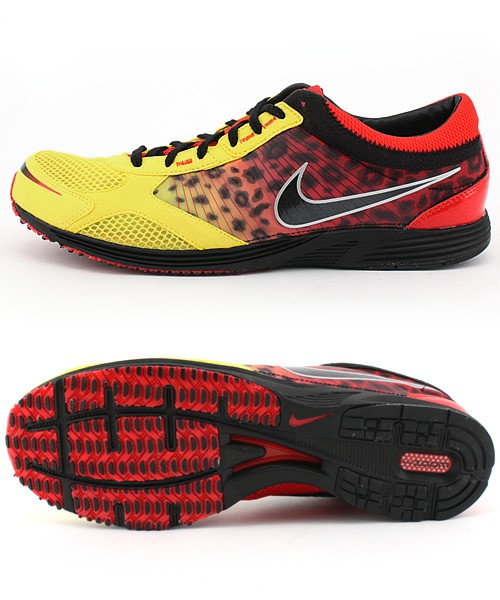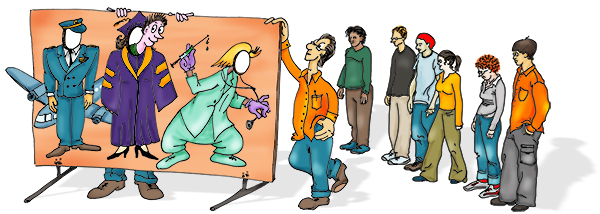Deutscher, G. (2010). “Does language shape the way you think?” New York Times Online Edition. Retrieved on October 4, 2010. http://www.nytimes.com/2010/08/29/magazine/29language-t.html This article summarizes the history and the current status of the linguistic relativity hypothesis or the idea that “language shapes thought.” This idea comes in several different formulations. The version on which Deutscher’s review focuses is a cross-linguistic claim that speakers of different languages use different mental representations or processes as a result of having learned different languages as children. A particularly strong version of the cross-linguistic hypothesis suggests that our native language provides us with a basic toolbox of conceptual representation, so if a concept or a mode of thought is not encoded in a given language, its monolingual speakers would be incapable of thinking about such a concept or thinking in such a mode. For instance, linguistic relativity led to the prediction that people’s perception of differences in color should reflect the way their language encodes color. This prediction was spectacularly disproven by the discovery that people whose language only has two color terms in its vocabulary perceive and categorize colors similarly to speakers of English, which has 11 basic color terms, plus many non-basic ones (Berlin…
Cultural Bias
Conceptual Design, Cultural Bias, Cultural Differences, Ethnographic & User Data, Flow, Personality, Pipsqueak Articles, Product Design Strategy, Users
Branding & Emotional Design: The Culture of Sneakers
by Olga Werby •

How do we spend our money? Well, the first cut goes to survival: essential goods and services that are absolutely necessary to our survival. Food, housing, medical care are all part of the basic necessities of life. Some, of course, are more necessary than others (we might postpone going to a dentist…but not for long), but there’s a core of stuff that we need to live. The next tier up from survival is comfort. This is a very large tier—what’s comfort to some is a necessity to others and visa versa. People use their income to increase their general comfort level. This might mean a large house, more comfortable beds, larger selection of clothing. But generally, when we talk of comfort, we don’t include jet setting to Paris for a nice date out on the town. Comfort is about everyday life needs, but more comfortable. The top tier of our income is the disposable income and it is spent on luxury—the money we have left over from dealing with our needs and comforts; the money we can chose to spend in an extravagant and even wasteful manner. When economists make predictions about the average size of the available disposable income,…
Conceptual Design, Contributor, Cultural Bias, Interaction Design, Product Design Strategy
How to brand a disease — and sell a cure
by Sheetal Elangovan •
Elliot, C. (2010). “How to brand a disease—and sell a cure .” CNN. Retrieved on 11 October, 2010: http://www.cnn.com/2010/OPINION/10/11/elliott.branding.disease/index.html?hpt=C2 Carl Elliott in his article for CNN cites examples of how pharmaceutical companies sell a cure by disease branding. Drug companies today are embracing the ideology that Edward Bernays’, the father of PR proposed—The public relations business was less about selling things than about creating the conditions for things to sell themselves. Why disease branding works? As Carl Elliott states in his article, disease branding is particularly effective in two types of situations. Let us consider the first situation, a shameful condition that can be de-stigmatized through disease branding. If a condition, however shameful, is prevalent enough in the common population then a ready market exists for the cure. It is the rare shameful condition for which a market typically does not exist where disease branding will help ‘create’ a market. Individuals with this rare condition would need to overcome the stigma attached with such conditions and discuss them with their health care providers. By branding a disease and de-stigmatizing the condition, the pharmaceutical companies act as catalysts and enablers to the process of individuals coming forward and discussing the condition…
Background Knowledge, Conceptual Design, Contributor, Cultural Bias, Cultural Differences, Flow, Interaction Design, Interface Design, Product Design Strategy
Using Computers to Teach Children Without Teachers
by Sheetal Elangovan •
Johnathan, F . (2010). “Using computers to teach children with no teachers” BBC News. Retrieved on 21 July, 2010: http://www.bbc.co.uk/news/technology-10663353?print=true Summary of the article: The article summarizes studies conducted by Prof Mitra on the learning curve of children using computers for education with teachers. Results of the study prove that the teaching methods employed have been quite successful based on the fact that: Children who are not exposed to computers are highly motivated to teach themselves skills they want to learn Children have had a steep learning curve in picking up complex tasks with minimum supervision Learning by discussion and in groups ensures that content is retained and not skimmed through by children. Motivation levels of students are kept high with a grandmother figure in the picture. The best results of the study have been combined to create Self Learning Environments where children in groups of 4 share a computer to assimilate information. Virtually present volunteer grandmothers keep the student motivated and support the learning process. On Environment: The need for self-organized learning essentially arises in developing nations and the ones who do not have access to education. Children living in such conditions have a natural survival instinct, which keeps…
Cognitive Blindness, Conceptual Design, Cultural Bias, Cultural Differences, Ethnographic & User Data, Featured, Interaction Design, Interface Design, Mirroring Errors, Pipsqueak Articles, Users
Be the Customer
by Olga Werby •

By our very nature, humans are an “us versus them” kind of mammal. We are quick to judge and categorize: “he’s our kind’a people” or “she’s management.” We adapt and root for our favorite sports teams, sometimes even resorting to violence to “defend our guys.” We peg an art department against the engineers; we side with nurses over doctors; we fight with democrats against republicans; we wave our flags in a spirit of nationalism. And it doesn’t matter if we all work for the same company, heal the same patients, want the same basic rights, or live on a very small planet—we tend to take sides. So it’s no surprise that when product designers develop products the feeling of “us against the users” creeps up into the process. To protect the design process from these “us versus them” impulses, we can create a well-realized user personas based on the the audience taxonomy developed during the conceptual design stage of product design. For each major category in the audience taxonomy, a sample fictional user is created which embodies all of the traits in that audience category: age, profession, socio-economic background, culture and sub-culture, interests and dislikes, family status, education level, etc.…
Cultural Bias, Cultural Differences, Ethnographic & User Data, Pipsqueak Articles, Product Design Strategy
Space-Time Changes in Cultural Variables
by Olga Werby •
Some designs are timeless, some are dated. TV shows, movies, books, and even Web sites change as both technologies driving the medium change and as our sensibilities as consumers alter in time. Cultural shock is easy to spot as we move globe trot, searching for new experiences. But cultural shock is just as easy to get at home, watching old commercials and movies. As product designers, we want to find those attributes that will stand the course of time and space. The need for innovation and push to grab the most number of users makes evolutionary design less and less appealing. But it’s the “hammers” of the world that retain their value long after the newest fads have come and gone. A product that is build as an answer to a specific, human need, stands the test of space-time utility.
Attention, Background Knowledge, Conceptual Design, Contributor, Cultural Bias, Interaction Design, Interface Design, Perception, Product Design Strategy
On “Legendary Magazine Covers Get Their Own Spread”
by AnneMalhotra •
CNN staff. (2008). “Legendary magazine covers get their own spread.” CNN. Retrieved on April 27, 2008. http://edition.cnn.com/2008/SHOWBIZ/books/04/25/esquire.coverart.ap/index.html CNN publishes a eulogy of George Lois as his work for the Esquire magazine is going to be exhibited at New York’s Museum of Modern Art. Reviewing some of the magazine covers, the journalist highlights what made the designer’s shots iconic. In this respect, two main arguments come up. First, the journalist lays an emphasis on the power of the images. Describing Muhammad Ali posing as Saint Sebastian, he shows to what degree it stroke people’s memory. In fact, in Lois’ point of view, the photograph has to make a powerful statement to push the viewer to look at the article inside. Not only did he succeed in doing that but he also stroke people’s memory to such an extent that they still remember where they first saw this cover at the time. His photographs gave polemical statements on political, cultural but also social issues and triggered heavy debate in the society. They became iconic through their simplicity of evocation and their ability to instill a tinge of provocation about contemporary issues. The Vietnam covers are telltale when it comes to affecting the…
